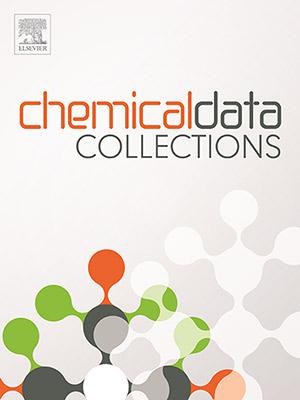Green synthesis of zirconium oxide/reduced graphene oxide (ZrO2/rGO) composite using Nyctanthes arbor-tritis for high-performance supercapacitor application
IF 2.7
Q2 Chemistry
引用次数: 0
Abstract
This study reports the syntheses of graphene oxide (GO), reduced graphene oxide (rGO), and a composite of zirconium oxide and rGO (ZrO2/rGO). The rGO was procured via a microwave-assisted green synthesis technique. Nyctanthes arbor-tristis (Parijat) leaf extract was employed as the primary reductant, leveraging their phytochemicals as reducing and capping agents. To ensure effective reduction of GO layers, l-ascorbic acid has been used as an auxiliary reducing agent. The mild reducing agent enables controlled reduction while preserving functional groups. The synthesized materials were characterized through optical, vibrational, and morphological analyses. Furthermore, electrochemical testing via cyclic voltammetry and galvanostatic charge-discharge revealed a specific capacitance of 210.58 F/g at 5 mV/s for the ZrO2/rGO composite. Power density of 6300 W/kg was achieved, indicating the composite's potential for rapid energy delivery.
绿色合成氧化锆/还原性氧化石墨烯(ZrO2/rGO)复合材料,用于高性能超级电容器应用
本研究报道了氧化石墨烯(GO)、还原氧化石墨烯(rGO)和氧化锆-氧化石墨烯复合物(ZrO2/rGO)的合成。rGO是通过微波辅助绿色合成技术获得的。以夜草叶提取物为主要还原剂,利用其植物化学物质作为还原剂和封盖剂。为了确保氧化石墨烯层的有效还原,l-抗坏血酸被用作辅助还原剂。温和还原剂使控制还原,同时保留官能团。通过光学、振动和形态分析对合成材料进行了表征。此外,通过循环伏安法和恒流充放电的电化学测试表明,ZrO2/rGO复合材料在5 mV/s下的比电容为210.58 F/g。功率密度达到6300 W/kg,表明该复合材料具有快速供能的潜力。
本文章由计算机程序翻译,如有差异,请以英文原文为准。
求助全文
约1分钟内获得全文
求助全文
来源期刊

Chemical Data Collections
Chemistry-Chemistry (all)
CiteScore
6.10
自引率
0.00%
发文量
169
审稿时长
24 days
期刊介绍:
Chemical Data Collections (CDC) provides a publication outlet for the increasing need to make research material and data easy to share and re-use. Publication of research data with CDC will allow scientists to: -Make their data easy to find and access -Benefit from the fast publication process -Contribute to proper data citation and attribution -Publish their intermediate and null/negative results -Receive recognition for the work that does not fit traditional article format. The research data will be published as ''data articles'' that support fast and easy submission and quick peer-review processes. Data articles introduced by CDC are short self-contained publications about research materials and data. They must provide the scientific context of the described work and contain the following elements: a title, list of authors (plus affiliations), abstract, keywords, graphical abstract, metadata table, main text and at least three references. The journal welcomes submissions focusing on (but not limited to) the following categories of research output: spectral data, syntheses, crystallographic data, computational simulations, molecular dynamics and models, physicochemical data, etc.
 求助内容:
求助内容: 应助结果提醒方式:
应助结果提醒方式:


